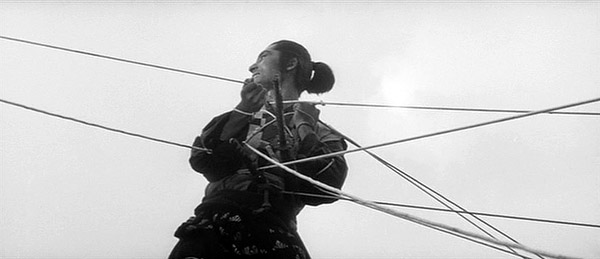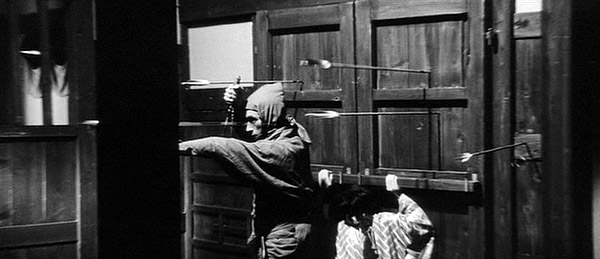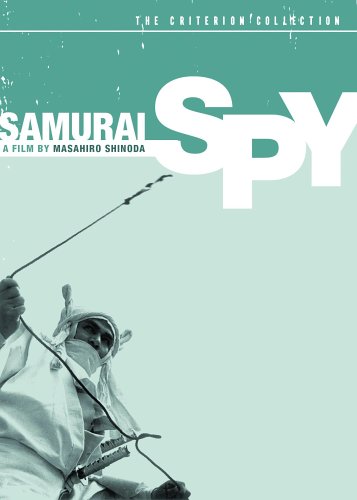The 1st of a 4-part look at the visual qualities of Masahiro Shinoda’s Ibun Sarutobi Sasuke

It doesn’t take long to realize that director Masahiro Shinoda and cinematographer Masao Kosugi were up to something different in Samurai Spy. Different for a ninja movie, or any movie really. The use of lines to point the eye of the viewer is fundamental movie making, but here, the lines are often pointing away from the central character or action of the scene. Other times they crash into each other or cross at weird points. The geometry provides visual clues that pay off with lies, broken rules of compositional physics designed to confuse the viewer as much as the political and moral intrigue of the plot is confusing Sasuke himself.

In the liner notes of Criterion’s DVD, Alain Silver, author of the indispensable The Samurai Film, refers to the visual craft of SS as a “graphic scheme” with “angular and conflicting lines of force,” and those lines clutter frames, confuse the viewer, and ultimately support an underlying theme of the movie – nothing is as it seems and no one can be trusted. You can’t even trust the photography…


Samurai Spy ends with a lot of action atop elevated foot bridges. Sakon and Sasuke first meet on a suspension rope bridge, with the martial arts action (stunning slow-motion leaps) defying the horizontal confining lines of the architecture on which they fight. Their final meeting is on a seemingly endless linear walkway. An easy metaphor would have been for the final battle to take place at this bridge’s end, but fighting in the middle of this long expanse makes the symbollic timing of their skirmish just as unpredictable (and like a real life conflict, illogical) as the rest of the film.
It all comes down to dramatic theatrical fight poses (discussion of these coming day 3) interrupting the grid lines of tilled land and constructed bridge. Astounding planning went into these fights that, while nothing to write home about in the raw martial arts department, convey real tension and high drama via composition instead.
Tomorrow: both shadows AND light serve to obscure characters and add mystery.
Buy the highly recommended Criterion DVD at VN’s Amazon store.







